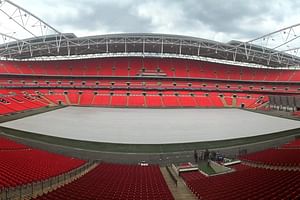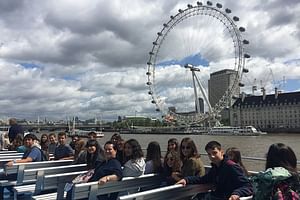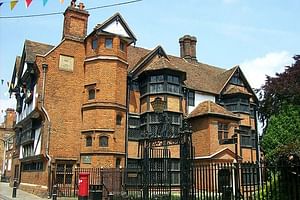The gallery will be closed from mid-2020 to (planned) spring 2023 for a major refurbishment. During this time, parts of the collection will be displayed around the UK in a series of exhibitions and collaborations, with other international loan exhibitions.
This is a three-hour tour with an expert tour guide. Virtually hidden away behind the National Gallery, The National Portrait Gallery (NPG) is an art gallery in London housing a collection of portraits of historically important and famous British people for over four hundred years opening in 1856 where its first acquisition was possibly the oldest portrait of William Shakespeare. Find out more about the people who shaped Britain: meet Henry VIII and discover the fate of each of his six wives and Cardinal Wolsey and Thomas Cromwell, who won and lost power under him. We then visit the court of Queen Elizabeth I, and her favourite men Raleigh and Drake who plundered the Spanish and created England's first colonies.
Duration
The tour starts at
-
Important Announcement: The gallery will be closed from mid-2020 to (planned) spring 2023 for a major refurbishment. During this time, parts of the collection will be displayed around the UK in a seri...
Important Announcement: The gallery will be closed from mid-2020 to (planned) spring 2023 for a major refurbishment. During this time, parts of the collection will be displayed around the UK in a series of exhibitions and collaborations, with other international loan exhibitions.
The National Portrait Gallery (NPG) is a London Art Gallery with a collection of portraits of current and historically significant British people. It became the world's first portrait gallery in 1856. National Portrait Gallery has some significant paintings such as The Chandos portrait of William Shakespeare, the first painting to enter the NPG's collection for instance. Not all of the portraits are exceptional artistically, although there are self-portraits by William Hogarth, Sir Joshua Reynolds and other British artists of note. Some, such as the group portrait of the participants in the Somerset House Conference of 1604, are important historical documents in their own right. Often, the curiosity value is greater than the artistic worth of work, as in the case of the anamorphic portrait of Henry VIII’s only son Edward VI by William Scrots, Patrick Branwell Brontë's painting of his sisters Charlotte, Emily and Anne, or a sculpture of Queen Victoria and Prince Albert in medieval costume. Portraits of living figures were allowed from 1969. In addition to its permanent galleries of historical portraits, the National Portrait Gallery exhibits a rapidly changing selection of contemporary work, stages exhibitions of portrait art by individual artists and hosts the annual BP Portrait Prize competition.
- Hand sanitizers and masks will be available in our vehicles for the best hygiene practice.












